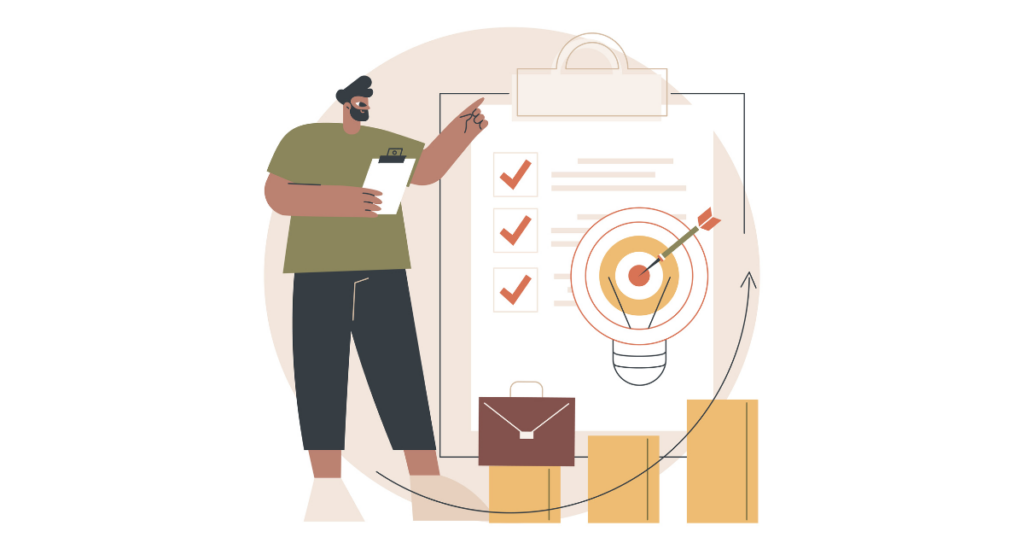Test strategy formulation happens to be one of the most important steps in the quality assurance process for software development. It delivers guidelines that set a standard by which testing has to be done in ensuring the product meets its requirements efficiently.
Well-defined testing in the planning phase provides guidelines on how best to minimize errors and also applies the best practices for quality testing.
It will help you through all the necessary steps to create an effective test strategy with examples and key considerations. Understanding this crucial element will help not only in the smooth running of a project but also improve the overall quality of the software product at the end.
Understanding Test Strategy

Definition of Test Strategy
A test strategy is a high-level document that defines the approach, technique, and resources that would be used in testing a given software application or system.
It is usually developed during the early part of the project and remains largely unchanged throughout a project's duration, providing direction all through the testing life cycle.
It lays down the standards regarding how the testing objectives are to be achieved, keeping in view two major factors or sides of the project: technical and business.
Importance of Test Strategy in Software Testing
The test strategy is important to have an explicitly mentioned perception of testing requirements and the methodology to be followed by the team.
Such a strategic document will help in maintaining consistency and quality throughout the development process and give a clear roadmap to achieve testing goals, facilitate communication among all stakeholders.
Moreover, a sound test strategy supports the identification of possible risks and mitigation plans quite early, which reduces the chances of major issues at a later stage of the software development life cycle.
Components of a Test Strategy
Testing Objectives
The sections for testing objectives in a test strategy, therefore, define what the testing team is to achieve: normally checking that the software meets the specified requirements, checking its functionality, assessing user experience, and ensuring that the application has no bugs before it reaches the marketplace.
Clear statement of objectives will help the smooth running of the testing process and provide guidelines to the team on what should be prioritized during the testing phases.
Scope of Test
The scope of testing details which features and functionalities of the software will be tested and which will not. It defines the boundaries of the project testing phases, helping testers understand their limits and areas of focus.
This section also often includes information on what types sustainability and regression tests will be performed.
Test Environment
The test environment section describes the physical or virtual environments where the testing will take place. It includes specifics regarding the hardware, software, network configurations, and other tools and resources that are required.
Setting up a test environment that closely simulates real-life operating conditions allows testers to uncover issues that could potentially affect the end-users, thus ensuring a more reliable and robust software product.
Creating a Test Strategy
Steps to Develop a Test the Strategy
Development of a test strategy is an important stage to ensure that software from a development house is free of bugs and errors before it reaches the end user.
The process initiates with an understanding of the business requirements and the identification of key deliverables of the project. The following steps shall help in developing a test strategy:
1. Scope out Testing: Clearly state what is to, and what is not to, be tested. Knowing the boundaries of the testing effort allows for effective management of resources.
2. Type of Testing Required: The needs for all types of testing, viz., unit, integration, system, or acceptance, based on the requirements of the project.
3. Test Environment: Details of hardware, software, and network configurations for testing should be defined; this will also include any third-party tools or support software.
4. Risk Analysis: Analyzing the potential risks of the project and concentrating on testing based on the associated risk on identified risks.
5. Resource Planning: Identify the roles and responsibilities of every member. Plan staffing and training requirements that are necessary to meet testing needs.
6. Schedule & Estimation: Develop a timeline for all testing activities and estimate the effort required. This should align with the project delivery deadlines.
7. Test Deliverables: List all the documents, tools, and reports that will be delivered as part the testing process. This may include test plans, test cases, and issue logs.
Writing Test Strategy Document
A test strategy document documents the intended approach for the testing activities and provides a guideline to the testing team. It should be unambiguous, concise, and available for all interested parties.
The following list may be used as key elements which should be included within a Test Strategy Document:
- Introduction: This section shall briefly explain the purpose and scope of this document.
- Test Objectives: Clearly state what should be achieved from the testing.
- Clearly mention the region in the software under test.
- Test Criteria: Mention the 'pass' and 'fail' criteria of all the phases of testing.
- Testing Methods: Provide information about testing methodologies and tools to be used.
- Resource Allocation: Bring out how the resources are going to be allocated. This includes human and technological.
- Schedule: Attempt a detailed RA schedule showing the different testing phases and milestones well.
- Risks and Mitigations: Discussion of risks and mitigation strategies against the same.
Sample Test Strategy Templates

Template 1: Agile Test Strategy
The Agile test strategy is adaptive and involves continuous feedback. A sample template might include:
- Objective: Ensure every release meets quality standards through iterative testing.
- Scope: Test functionality of new features and regression testing for existing features.
- Methodologies: Use a combination of automated and manual testing to speed up cycles.
- Environment: Testing in a staging environment that closely mimics the production system.
- Deliverables: Sprint-wise test plans, automated test scripts, and defect reports.
Template 2: Waterfall Test Strategy
In a Waterfall model, the test strategy is comprehensive and linear, reflecting the sequential phases. A sample template could look like this:
- Objective: Validate the software at each stage of development before moving to the next stage.
- Scope: Include detailed testing at each phase: requirements, design, implementation, and deployment.
- Methodologies: Focus on manual testing with detailed test cases outlining expected inputs and outputs.
- Environment: Define separate environments for each testing phase to avoid overlap and conflicts.
- Deliverables: Comprehensive test plans, detailed test cases, and a final test report summarizing findings and outcomes.
Best Practices for Writing Test Strategy
Clear and Concise Communication
Test strategy documents should be very clear and concise. They should spell out the objectives, methods, resources, and timelines such that any member of the team fully understands what is expected of him or her to conduct their part effectively.
Use simple language. Avoid jargon that may cause miscommunication or confusion. This includes the use of bullets, which increases readability, and well-defined sections so that all points are easily referenced.
Collaboration with Stakeholders
At every step, the involvement of key stakeholders in the creation of a test strategy is very critical. Typically, this would comprise project managers, developers, quality assurance teams, or business analysts.
Only this kind of collaboration would guarantee that business goals and technical requirements can be complied with.
This can be aided by regular meetings and updates, duly making sure to receive different kinds of inputs and promote the development of a common understanding of the goals of the project and standards of quality.
Continuous Review and Updates
A test strategy is not a static document; it should evolve as the project progresses. Continuous review and updates are necessary to adapt to changes in project scope, software updates, or external factors like regulatory changes.
Scheduled reviews allow teams to refine their strategies based on real-world findings and performance feedback. This adaptability helps in maintaining the relevance and effectiveness of the test plan throughout the project lifecycle.
Expert Advice on Test Strategy
Tips from Industry Professionals
Several industry veterans emphasize the importance of defining clear metrics for success and failure in the test strategy. This aids in objective evaluation of the test results.
Professionals also recommend leveraging automation tools where possible, to enhance testing efficiency and coverage. Additionally, incorporating risk-based testing to prioritize test cases based on their impact and likelihood can maximize resource utilization effectively.
Common Pitals to Avoid
One of the common mistakes while designing a test strategy is under-estimating the time and resources for adequate testing.
This can lead to poor testing, which can further compromise the quality of products; the most common mistake is miscommunication among teams; due to lack of clear communication, it often causes objectives to get mixed up or misunderstood.
Thus, the planning for testing should always be done realistically, and the communication channels among all the testing team members should always be open.
Book a Demo and experience ContextQA testing platform in action with a complimentary, no-obligation session tailored to your business needs.
Conclusion and Recap
In our guide, we have looked at how to create a proper test strategy one of the cornerstones in software testing. The clarity and completeness of this test strategy form a powerful influence on the effectiveness of your testing and, consequently, on eventual product quality.
You have set clear objectives, scope, and roles, and chosen the right types and methods for testing, thereby defining a roadmap that guides all testing activities.
Moreover, make sure to revisit the test strategy document from time to time for revision, if needed, because of project changes, technological changes, or business goal changes.
Following these steps in general through the key elements, with an adaption of that sample test strategy given here, the achievement of quality and reliability is not far fetchable in software products.
Always refer to this guide to be organized and effective in the development of future test strategies, enhancing overall quality assurance processes on your projects.
Also Read - Top 10 free open-source testing tools, Framework & Libraries
